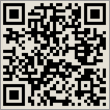The Invention of RFID and the Contributions of CHARLES WALTON
Typically, it is said that RFID was first used during the Second World War in the late 1940s. All factions including the United States were identifying incoming aircraft using radar which uses the same general technology that is used in RFID today. At the time however, it was impossible to tell which incoming airplanes were enemy aircraft and which ones were friendly. By determining the way in which enemy aircrafts were flown they were able to identify one type of aircraft from another and because of this, it is the first time people were able to identify radio frequencies as different than others. Thus, Radio Frequency Identification or RFID. Beyond that, the US and Great Britain used specific transmission devices in their own aircraft so that the radio base with the radar screen could see their aircraft as friendly on the screen. Thus, any other aircraft were enemy.
For decades following this invention scientists and scholars pondered the possibilities of using this technology. The ability to specifically identify objects remotely could come in handy in many fields.
The next impressive use of RFID was for use in security tags in retail locations. This allowed store security teams around the world to be able to apprehend shoplifters much easier. Also, with these safe holds in place it served as an excellent deterrent for would-be shoplifters. People would think twice before trying to steal an item if they knew the alarm would go off. This way, items cannot safely take items out of a store unless the rfid tags are either removed or turned off.
In 1973 Mario Cardullo was the first person to patent a RFID tag with the ability to have specific information written on it that was actually rewritable. This same year, Charles Walton, known in many arenas as the father of radio frequency identification as the first to patent an rfid pass card that would allow access to a locked door with the swipe of a ?key card?. In these cases the card must have the specific ID number embedded on it in order to open a specific door.
This same technology was used for specifically tracking all nuclear missiles towards the end of the 1970s. Using this technology the government had the ability to know where all missiles and nuclear materials were at all times. In the early 1980s some locked warehouse companies vehicles were given rfid emitters to grant them access to secure locations.
In the agricultural world, this was starting to be used for tracking cattle and other farm animals. This would ensure all animals were accounted for as well as to ensure each animal only received one dose of their daily vitamins and medicines.
It was this technology and the way that it was applied that influenced the invention of NFC or near-field communication.
The contributions of RFID thanks to Charles Walton
A PDF Document detailing RFID key cards for hotel rooms
A USA Today news article on RFID key cards being used in hotels


